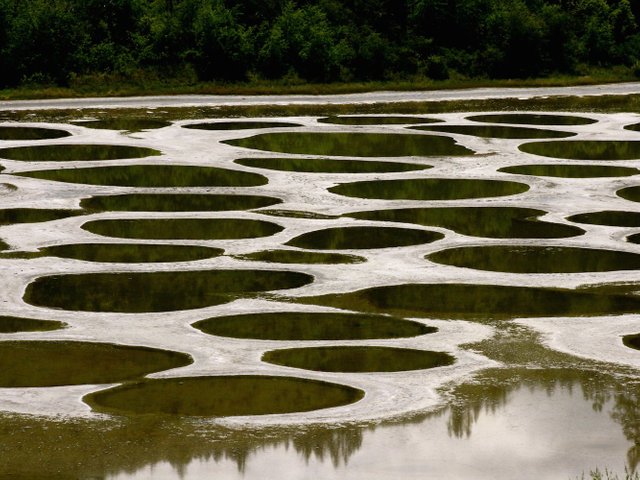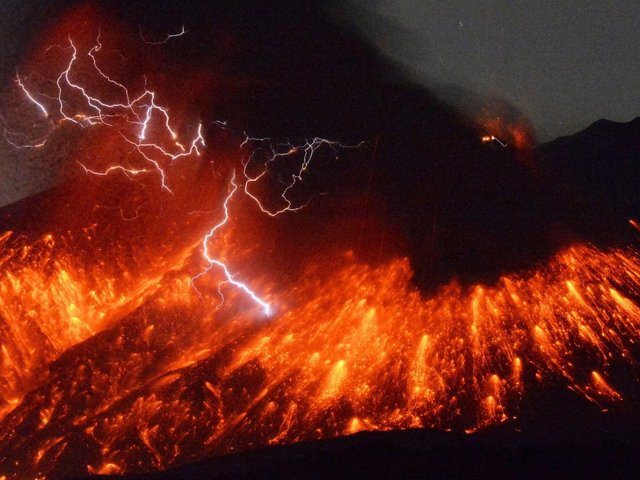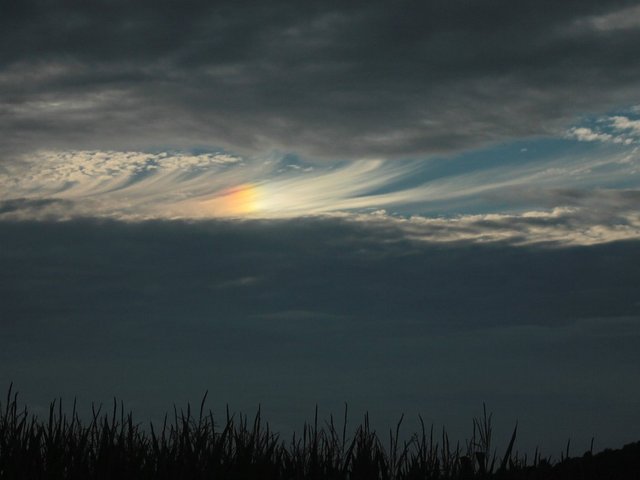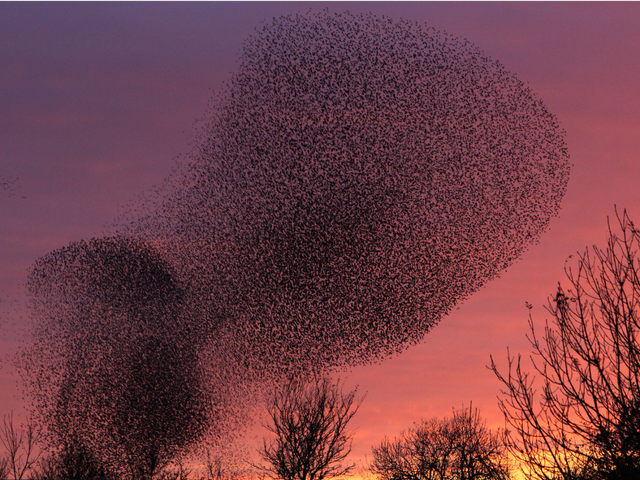25 of the coolest and most surreal natural phenomena on Earth

It's easy to get lost in cars and offices and grocery stores and forget that there's a bigger, more beautiful world we don't always get to see. But there's stunning stuff happening every day, in some cases right outside your door.
So let's take a whirl through some of the most incredible, sometimes mind-boggling phenomena the Earth has to offer — along with a little of the science behind them.

Volcanic lightning at Mount Sakurajima, Japan.Kyodo/Reuters
That's right, volcanoes can produce lightning.
It's pretty hard to study, but researchers have a few ideas about what causes it. One of the most common is that during an eruption, ash picks up so much friction that the build-up of static electricity causes lightning.

A fire rainbow in Pennsylvaniafishhawk/Flickr
These beautiful sky paintings have nothing to do with fire or rain, as weather-loving people are very quick to point out.
They're actually caused by the sun, very high in the sky, shining through a particular type of ice cloud formation. That means that how rare they are varies with how far north or south you are.

Like fire rainbows, halos require just the right formation of ice crystals in clouds high above the surface of the Earth to bend light from the sun into a perfect ring.
The same phenomenon can also happen with moonlight, although moon halos are usually white and sun halos can be rainbow-colored, like this one.

It's pretty clear how this phenomenon got its nickname: It looks like a tornado, but it's made of fire. "It's just like a spinning column of flames," forecaster Michael Watkins told the Los Angeles Times.
They form when wind patterns twist an active fire into a column.
About once a year, the US sees one large fire whirl — as tall as 1000 feet. Fire whirls can spread fires not only directly, but also by scattering burning debris.

Penitentes in front of the Atacama Large Millimeter/submillimeter Array telescope and the Licancabur volcano in northern Chile.European Southern Observatory/Flickr
These ice spikes, called penitentes, form in high altitudes, where sunlight turns ice directly into water vapor, rather than melting it to water.
Sun beams vaporize small dimples in the snow's surface. Then, the uneven surface directs sun into the dips and away from the peaks, exacerbating the trend.
Penitentes can grow as tall as 15 feet.

Blood Falls, in one of the driest regions of Antarctica, is fed by an underground lake. It's full of bacteria scientists want to study because they fuel themselves with sulfates, instead of sugars like we do.
The water has so much iron in it that it literally rusts when it meets air, giving the waterfall its trademark color.

Sting wasn't making it up: There really is such a thing as a desert rose.
It's a special form of the mineral gypsum that can develop in dry sandy places that occasionally flood. The switching between wet and dry lets gypsum crystals form between grains of sand, trapping them.

Hailing from the Philippines and Indonesia, the rainbow eucalyptus, also known as the rainbow gum, is probably the most colorful tree on Earth. Its striped look is caused by bark turning colors and peeling away as it ages.
The youngest bark is bright green because it contains chlorophyll (usually found in leaves), then turns first purple then red then brown as it gets older, loses chlorophyll, and picks up tannins (also found in wine).
In an ironic twist, huge amounts of rainbow eucalyptus wood pulp is turned into white paper every year.

A waterspout near Singapore.Neil Anderson /Reuters
Waterspouts look like liquid tornadoes, but while they can form during storms, they can also develop on calm, open ocean — swirling towers of wind climbing up from the water to the sky.
They are most common in the Florida Keys, although they've also been spotted on the Great Lakes.

A murmuration of starlings in Britain.Scott Heppell/AP
An individual starling isn't much to look at. But put hundreds or thousands together and these birds turn into an incredible dance known officially as a murmuration and nicknamed a "black sun."
The flocks can be seen in the US and Europe, particularly in England, although the bird's British population is now only a third of what it was 40 years ago.
The flock's complex choreography boils down to just a couple simple rules, like follow your neighbor.
follow me please
good articles on interesting topics. upvoted and followed.
follow me please and reward